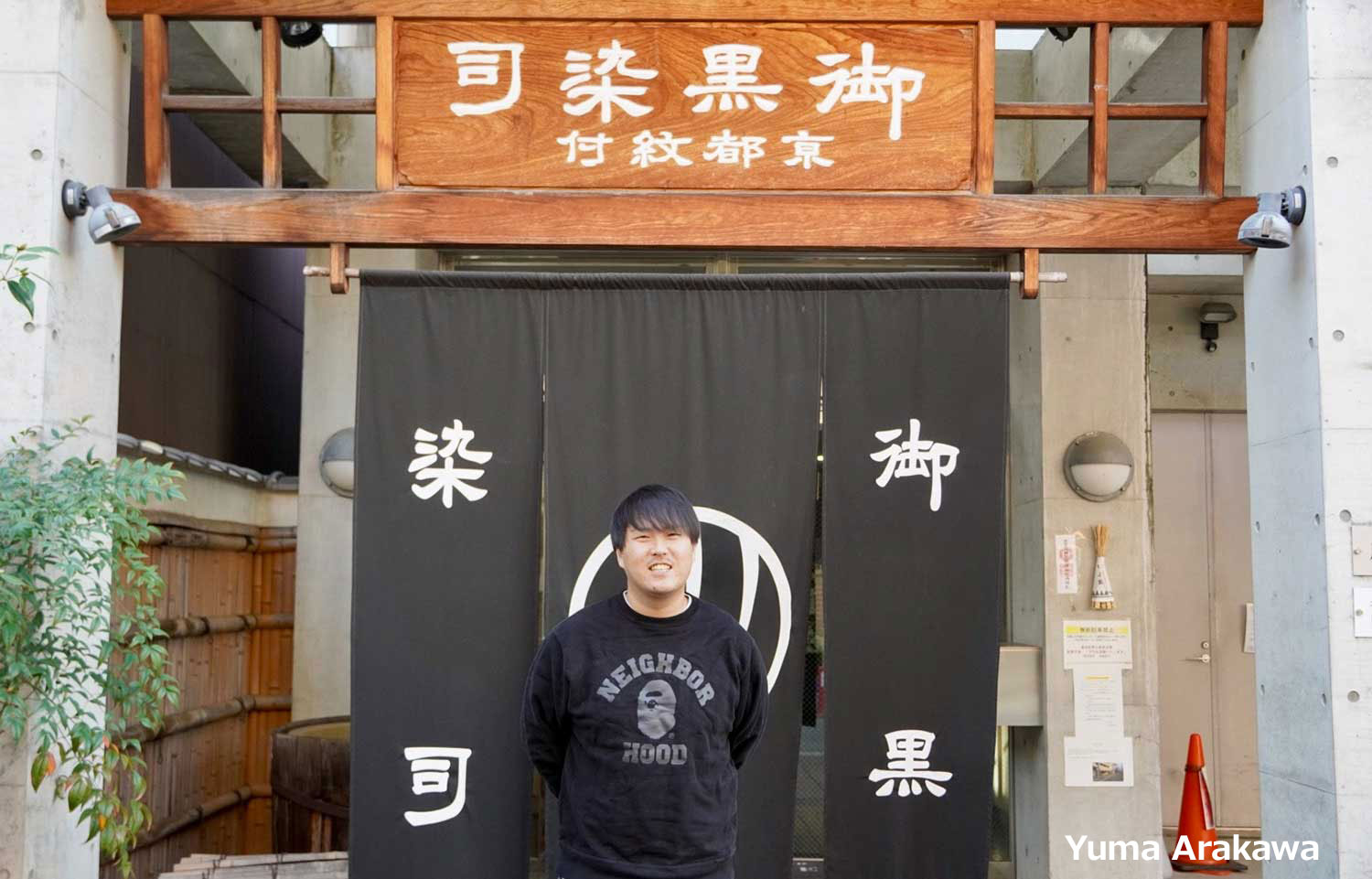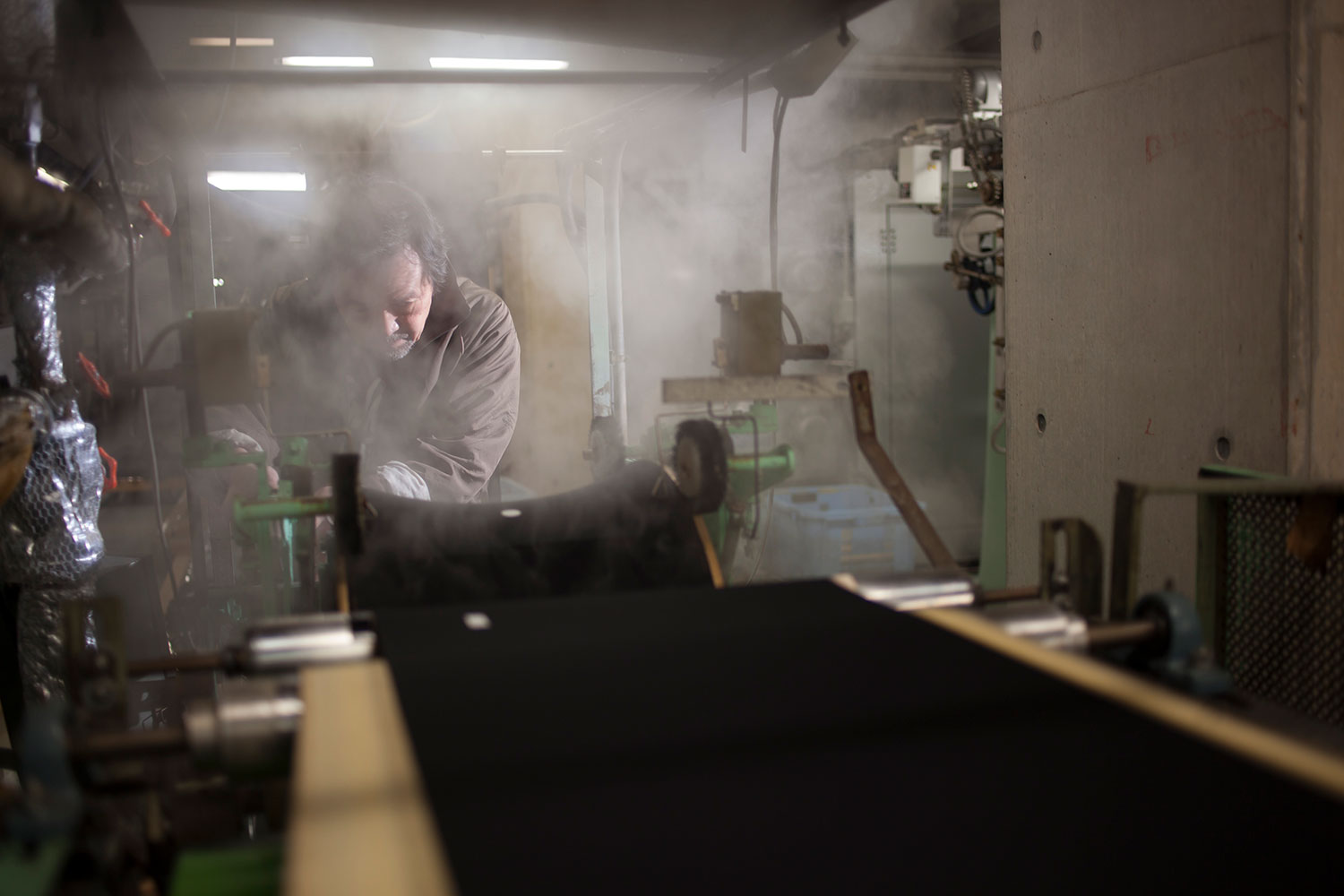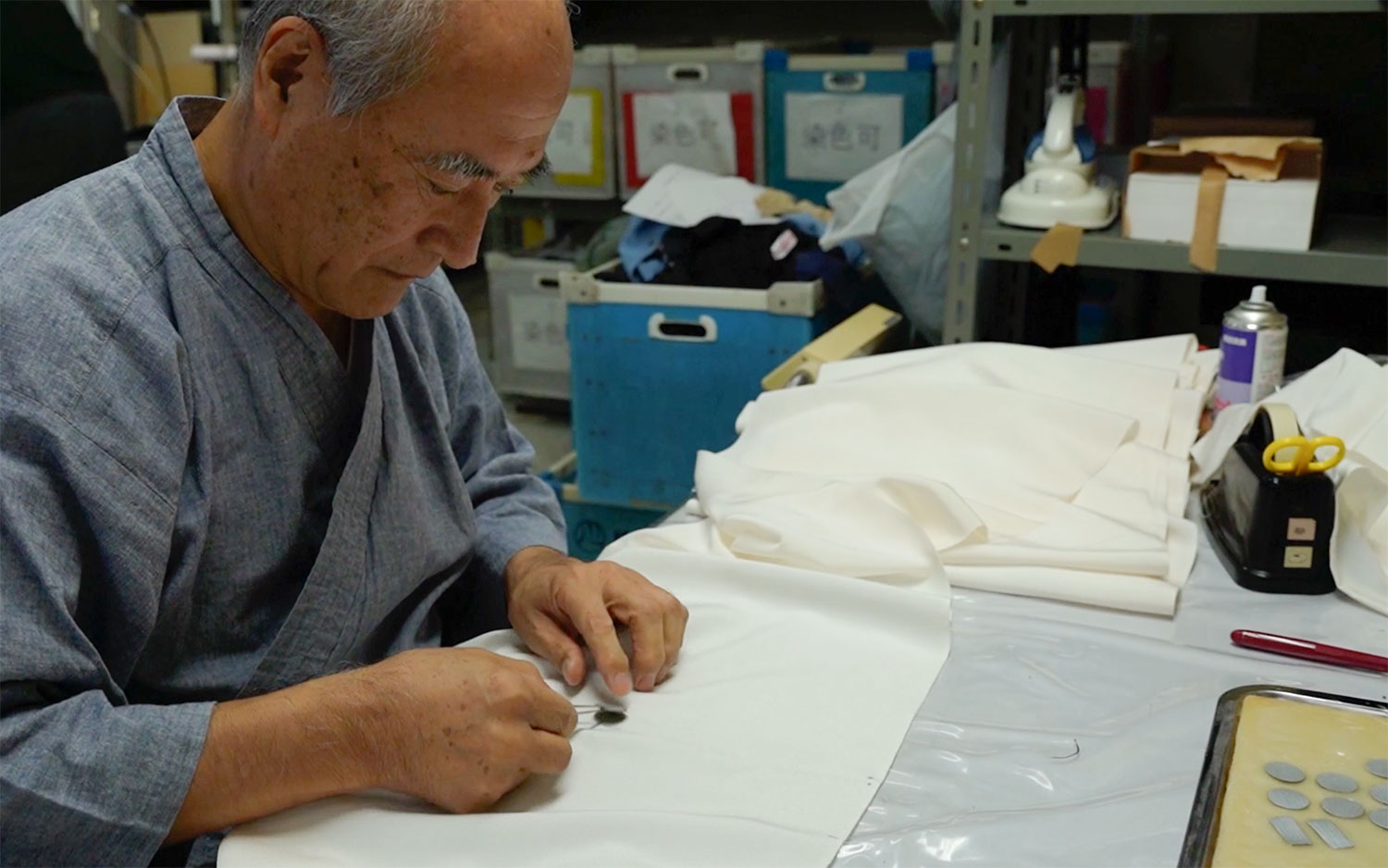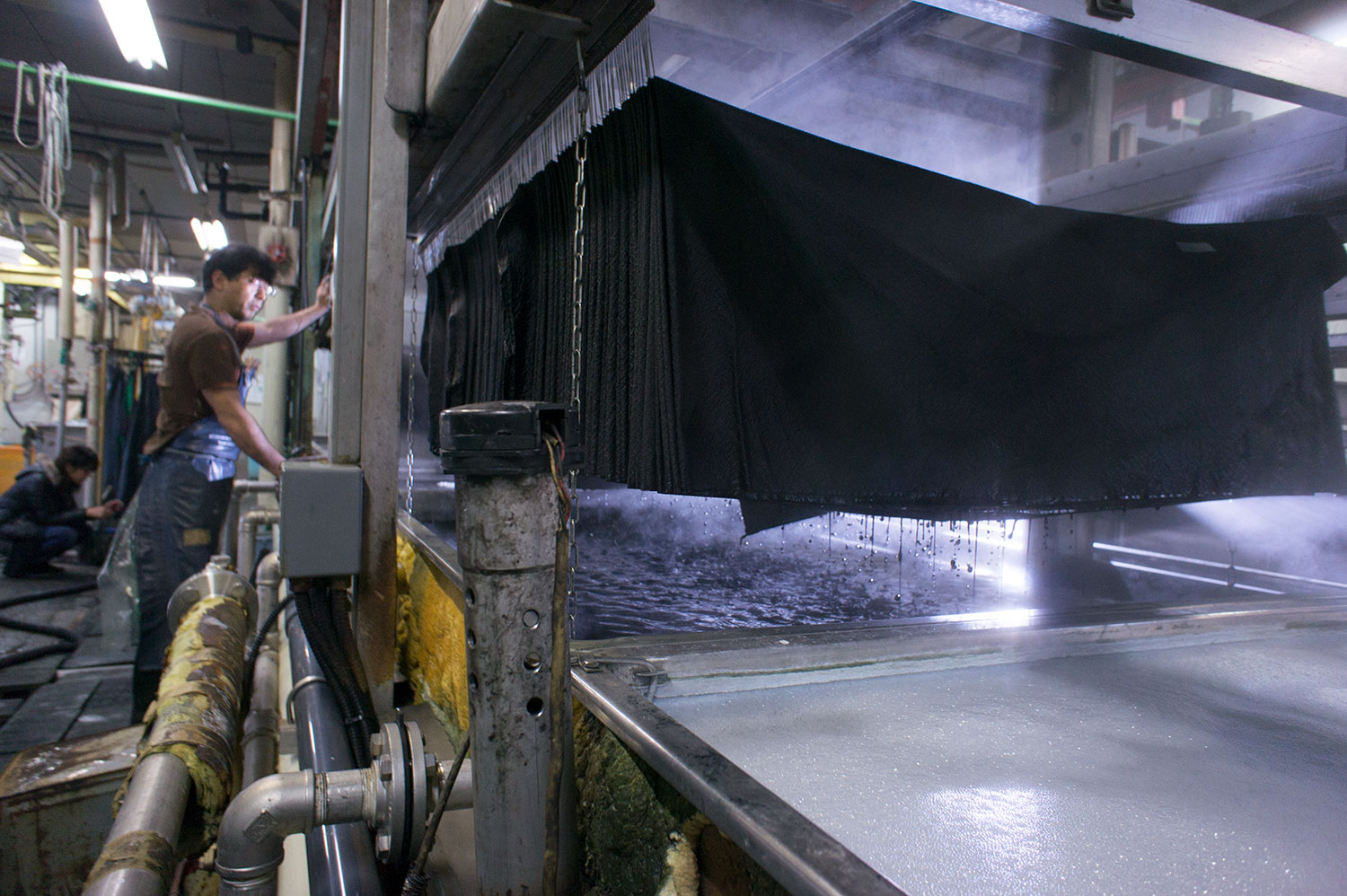
Forest

Tradition
Pursuing Only Black Dyeing for 100 Years
From traditional industry to an industry of innovation: Preserving tradition via sustainable change as an ideal way of doing business
Kyoto Montsuki Inc.
(Kyoto Prefecture)

Overview
Kyoto Montsuki is a company specializing in kurozome (black dyeing) with roots in Kyoto that has been producing black montsuki, which is a type of traditional Japanese formal attire, for over 100 years. The company takes pride in its unique technology that specializes in the color of black, and the company has continued to pursue deeper and deeper black color.
Black, as a word, comes with a rich variety of expressions in Japanese, including jet black, charcoal color, wet feather color, and ink color, etc. Since ancient times, the Japanese have enjoyed the diverse expressions of black in dim lighting, such as in light coming through shoji screens or from candlelight. Due to this cultural background, a unique culture has been cultivated that is fascinated by the mystery and shadows of the color of black.
However, despite this, Toru ARAKAWA, president of Kyoto Montsuki, says that the market for the montsuki industry has long hit bottom, and he realized that a black dyeing business would not be viable if only working with Japanese clothes. Therefore, in 2013, the company started a service that can dye any existing colored garment black as a replacement service, and the market has been growing year by year. Thus, it seems that, in order to protect traditional crafts, services need to change to match the current times.
Successful outcomes
- Currently, more than 99% of Kyoto Montsuki's sales come from its "K" black dye replacement business for apparel, while the remaining less than 1% comes from the black montsuki (kimono) business.
- Growth of the company’s “K” black dye replacement business: The number of partner stores expanded to 200 stores in three years. Unit sales tripled in the first year, and since then, sales have increased by 20% to 30% annually.
- As of 2018, the number of orders received has increased from about 500 pieces per month to about 1,200 pieces per month.
Background
- Over the past 30 years, Kyoto Montsuki’s sales of black montsuki have decreased significantly. At the peak, monthly sales amounted to 100 million yen, but this year, there was a month where sales dropped to 60,000 yen. Although Kyoto Montsuki is continuing to provide this service, budget planning is no longer carried out for this business line.
- At its peak, the entire black montsuki industry had a market size of 3 million pieces per year, but, currently, the number has decreased to 1,500 per year. This level of scale can be processed in two days at the Kyoto Montsuki factory.

Opening up the market: A new market for traditional industries created by Kyoto Montsuki
Over the last 20–30 years, the overall kimono market in Japan has shrunk significantly. Against this backdrop, Kyoto Montsuki felt a need to apply black dyeing techniques in a different way, and in 2001, the company started developing black dyeing for clothing, but at first, things didn’t really take flight. As an industry pioneer, with a view backed by experience through trial and error, President Arakawa relates: “Craftsmen tend to think that if they make a good product, it will sell, but even if they make a good product, it won’t sell unless there is a route and a customer to sell it to.
In 2013, the company began offering a black dye replacement service through a joint project with the WWF called “PANDA BLACK.” Even after the three years during which this popular project was carried out, the company continued to provide the service as its own business. Looking back though, President Arakawa felt that his company’s ability to communicate with potential customers was reaching its limits. However, the company was convinced that there was a latent need, and in 2020, they changed the name of this business line to a designation using the letter “K,” and the company focused on more-aggressive marketing and lowering the barrier to first order. Via this strategy, business gradually expanded, and the company succeeded in developing new markets.
One of the keys to success was changing the ordering system from weight conversion to a system charging by item, and this dramatically lowered the hurdle for consumers to place their first order. At the same time, the company strengthened its power to communicate with customers by forming a partnership agreement with an apparel company and using an affiliate system that allows users to go from the partner website to the “K” order page via just one click.

One of the company’s directors, Yuma ARAKAWA, has important words for traditional industries, whose markets are shrinking: “There is a need to adapt products and services to modern society while using the techniques cultivated over history.”
Kyoto Montsuki is currently making strides in disseminating the culture of black dyeing further, into areas outside of Japan. While accepting orders for processing garments from famous overseas brands, and in order to communicate the company’s new dyeing service to the world, in 2024, the company hopes to participate in exhibitions overseas, such as in Paris, New York, Milan, and China, and to look for new business partners.
The Kyoto Montsuki experiment is an essential lesson for traditional industry to be competitive in the global market, as well as for developing new markets. By combining traditional skills and innovative methods, Kyoto Montsuki is proof that traditional industries can aim for sustainable growth.
K (KUROZOME REWEAR FROM KYOTO)
Kyoto Montsuki Inc.
https://www.k-rewear.jp/







